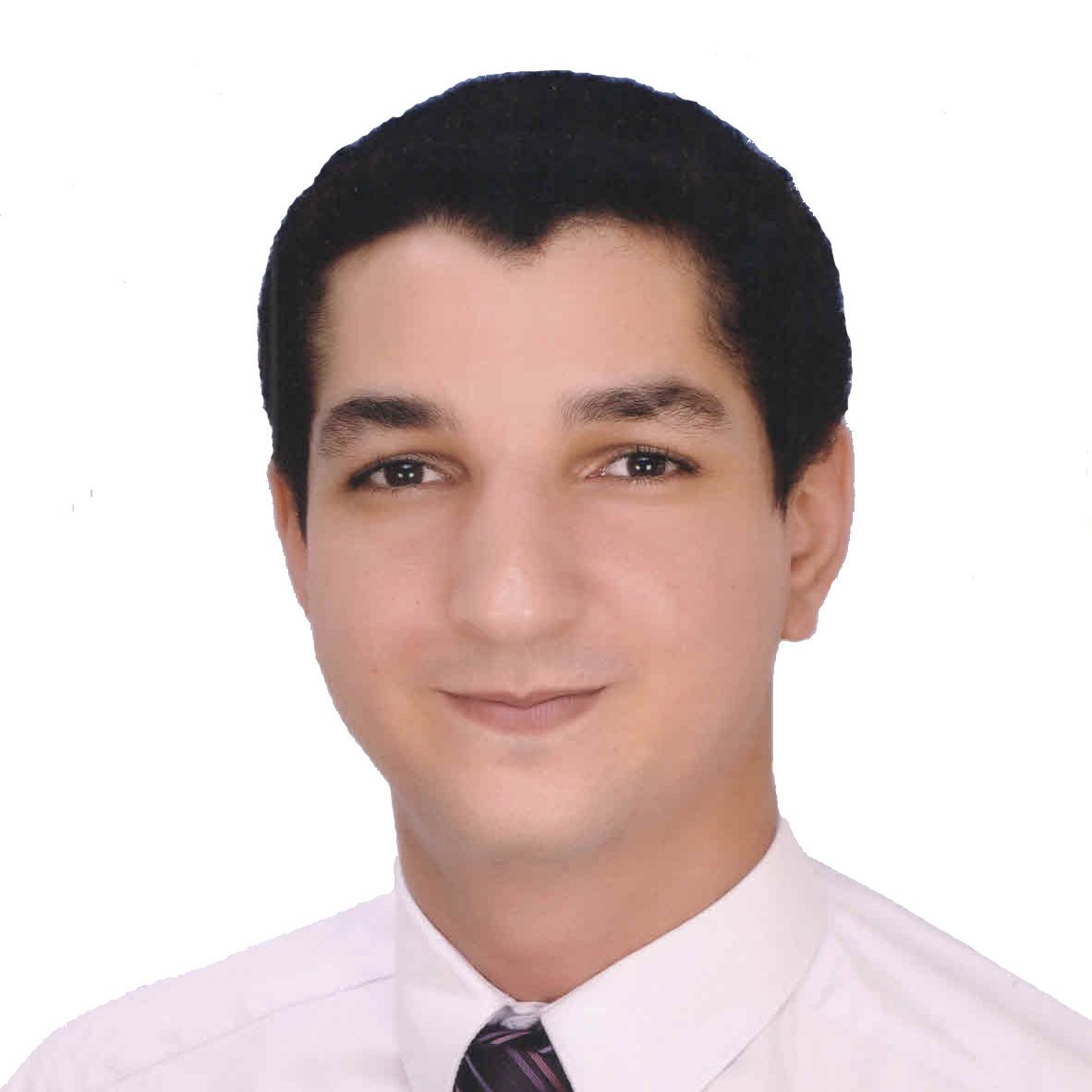The mission of our research group is to:
- Investigate the high-frequency dynamics of solid-state electronics, and push their fundamental limits through a series of coherent approaches across the device, circuit, electromagnetism and system levels
- Demonstrate state-of-the-art performance and new capabilities in chip prototypes operating at terahertz and above, in order to advance the next-generation electronic infrastructures for communication, biomedicine and sensing
The following projects are some examples of our efforts towards this mission:
◊ Chip-Scale Electronics for Molecular/Atomic Physics
Electromagnetic wave has always been an important tool for molecular and atomic studies. Implementing such wave-matter interactions at chip scale not only significantly reduces the energy consumption and form factor, but also enables EM-wave manipulation with much greater precision and flexibility. Our interests include, but not limited to, microsystems for (1) microwave-excited electron spin resonance, (2) low-THz molecule rotational spectroscopy, and (3) mid-THz ro-vibrational spectroscopy. The focuses span from high-performance and energy-efficient architecture to algorithms for processing the big data generated from broadband sensing. In addition to the hardware design, we also conduct studies and experiments on molecular/atomic physics in order to explore new opportunities in sensing and metrology (in collaboration with physicists and chemists at MIT, Lincoln Labs and other entities).
Related Publications: Nature Electronics 2019, JSSC 2019, ISSCC 2019, Nature Electronics 2018, VLSI2018 (Molecular Clock), VLSI2018 (Quantum Sensing), T-BioCAS2018, ISSCC2017, JSSC2017, JSSC2013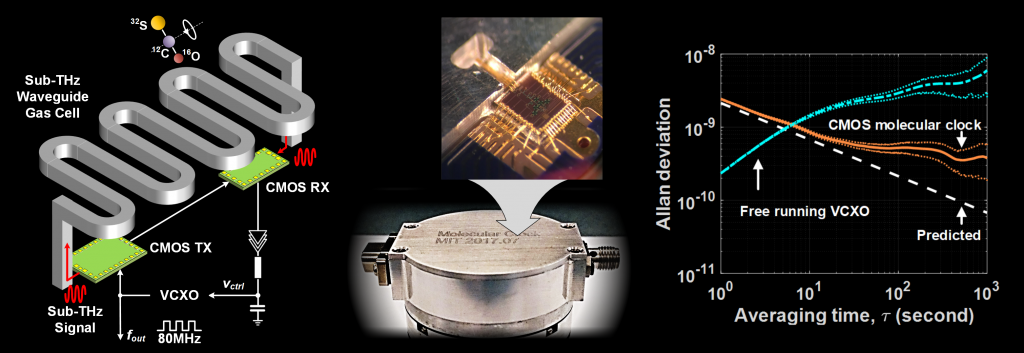

◊ High-Power THz Radiation Sources
The past decade has witnessed a dramatic improvement in THz power generated by integrated circuits (~five orders of magnitude for silicon chips). Nevertheless, similar to other THz technologies, high-power THz radiation source remains to be the most critical challenge. The key issue is, how we could create an optimal operation environment for a certain solid-state device using ultra-compact/efficient circuit topology. Our approaches utilize orthogonality of electromagnetic wave modes, as well as wave-formation geometry, in order to independently shape various THz signals using a single multi-functional on-chip structure. That maximizes the DC-to-THz radiation conversion efficiency and has enabled record output power in our chips. Recently, we are also inventing highly-scalable radiator array architecture, so that power from a large number of transistors can be extracted coherently, leading to highly-collimated, intense THz radiation.
Related Publications: JSSC2018, IEDM2017, RFIC2017, IEDM2016, ISSCC2015, JSSC2015, BCTM2015
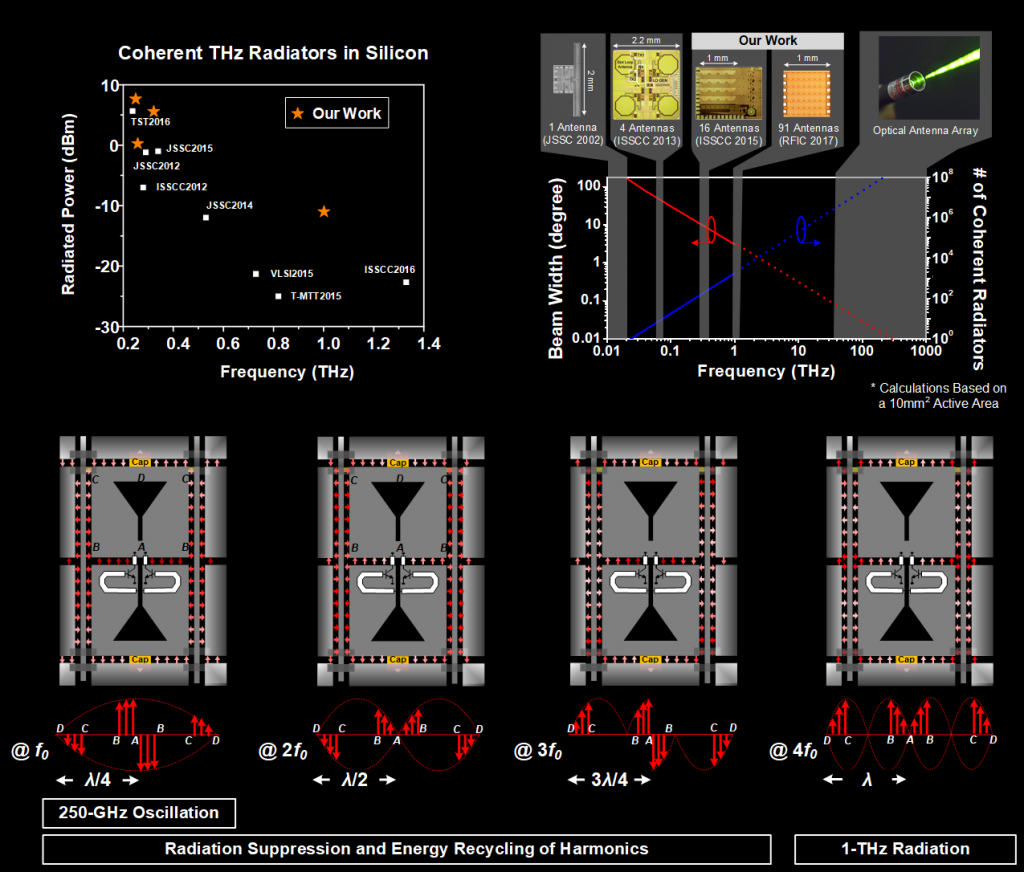
◊ Large-Scale Sensing Arrays for Rapid, High-Resolution Imaging
Waves in low-THz range provide powerful capabilities in ambient imaging and non-invasive inspection. For autonomous vehicles, it is probably the only modality that simultaneously offers high spatial resolution, good visibility in extreme weather conditions, non-mechanical beam steering and so on. Whether such technology will be widely adopted in the near future, however, remains an open question. This is largely determined by the related hardware under development and their performance. Our research has generated three generations of THz imagers: (1) we utilized ultra-fast Schottky diode (fT=2THz) in standard CMOS processes and demonstrated multiplexed THz detector array for the first time in silicon. (2) Leveraging the phase-locking capability we implemented in THz radiators, we demonstrated multi-pixel heterodyne receiver array that improves the sensitivity by ~10x. (3) At present, we are working on highly-scalable imaging architectures, as well as ultra-compact heterodyne pixels, that enable integration of large-scale coherent sensor with electronic beam steering. The success of this project will greatly increase the speed, resolution and range of current equipment.
Related Publications: JSSC2019, RFIC2018, IEDM2016, ISSCC2016, ISSCC2015, JSSC2016, JSSC2015, JSSC2013, ISSCC2012
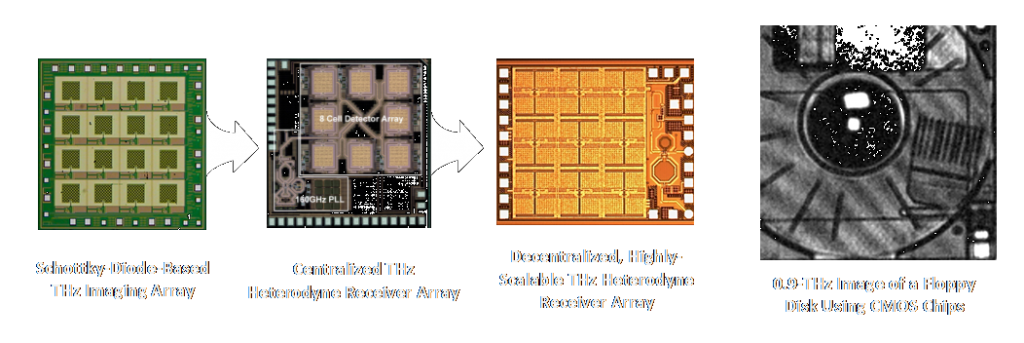
◊ Electronic Infrastructure for Tera-Scale Communication
The big-data era calls for tera-scale data transmission. While the adoption of new wireless spectrum is surprisingly slow, the trend in history is clear: get higher frequency and use more densely-deployed electronics. Our efforts in high-speed integrated circuits are addressing such challenges. Similarly, guided THz communication through polymer cables is also expected to overcome the excessive loss/dispersion dilemma that electric links encounter in copper cables. The project does not only include circuit-level innovations, but also a portfolio of passive components at chip and packaging levels as well. For example, we have demonstrated an inter-chip link infrastructure, that offers only 10dB loss over >50GHz bandwidth through a thin Rogers polymer strip. No other off-chip component is needed thanks to our new on-chip broadband wave coupler.
Related Publications: T-MTT2017, IEDM2016

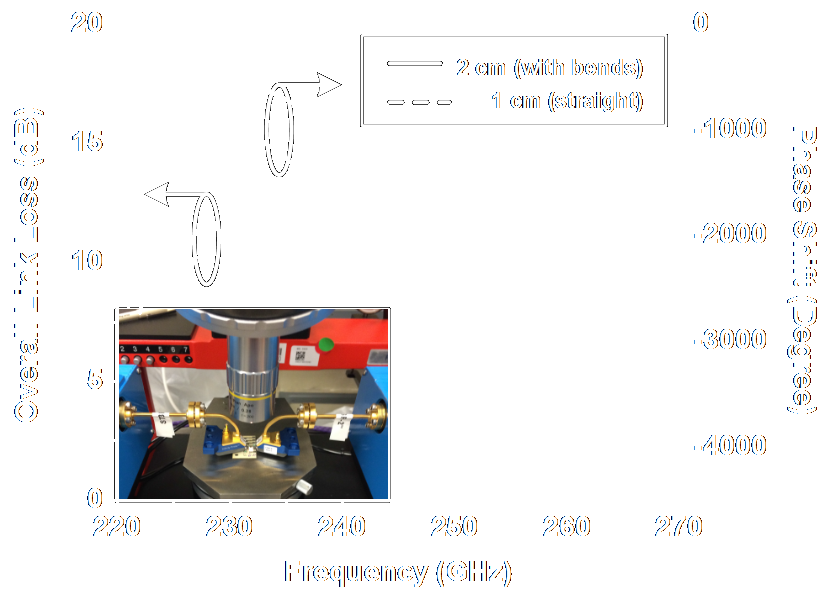

 Sanjay Chintapally (
Sanjay Chintapally ( Tyler Weigand (
Tyler Weigand ( Nicholas (Sihyun) Lee (
Nicholas (Sihyun) Lee ( Youran (Yoland) Gao (
Youran (Yoland) Gao ( Jason Li (
Jason Li ( Kyle Heinz (
Kyle Heinz ( Tiffany Louie (
Tiffany Louie ( Krishna Pochana (
Krishna Pochana ( Email: avabowen@mit.edu
Email: avabowen@mit.edu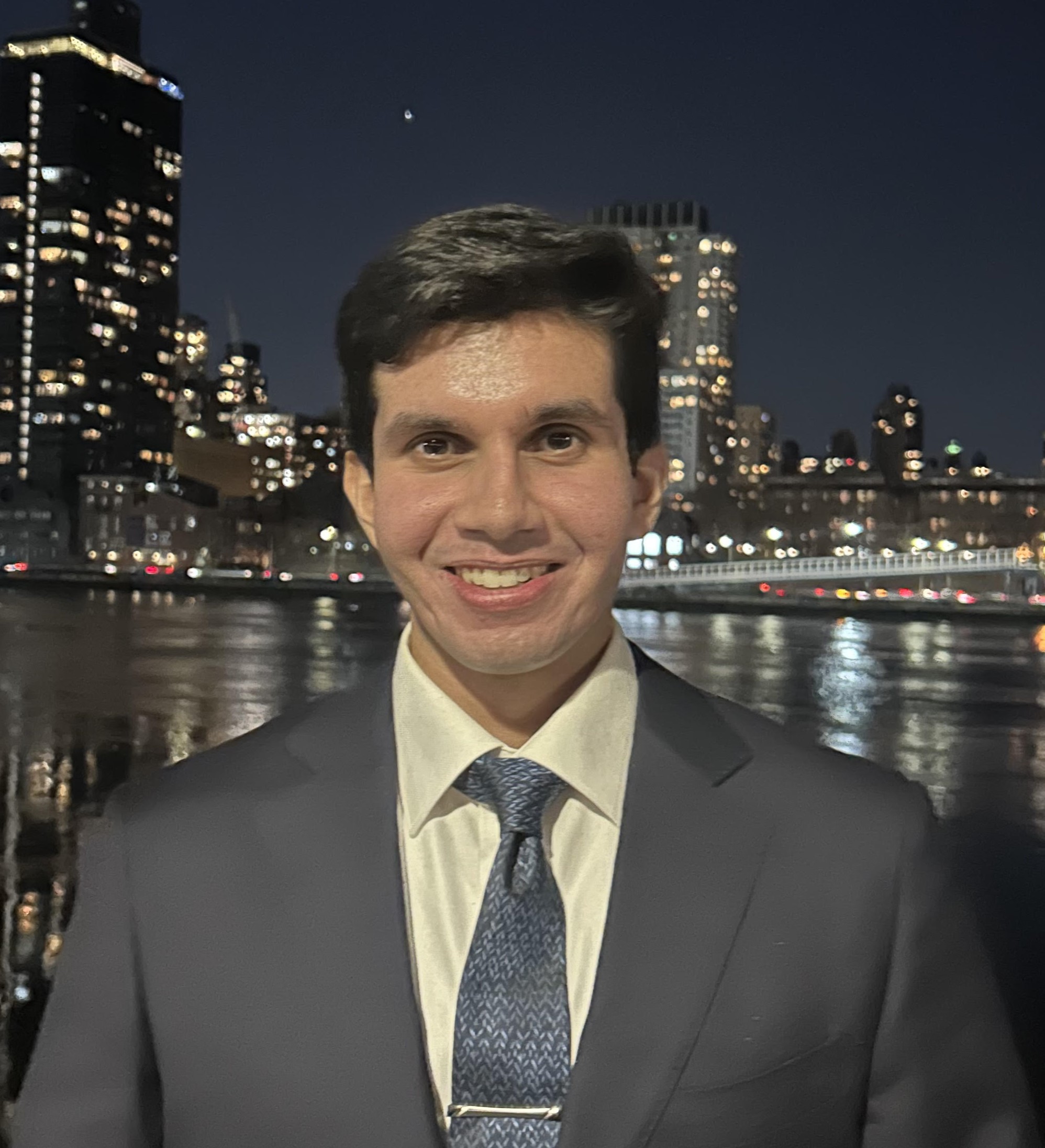 Pradyot Yadav (
Pradyot Yadav (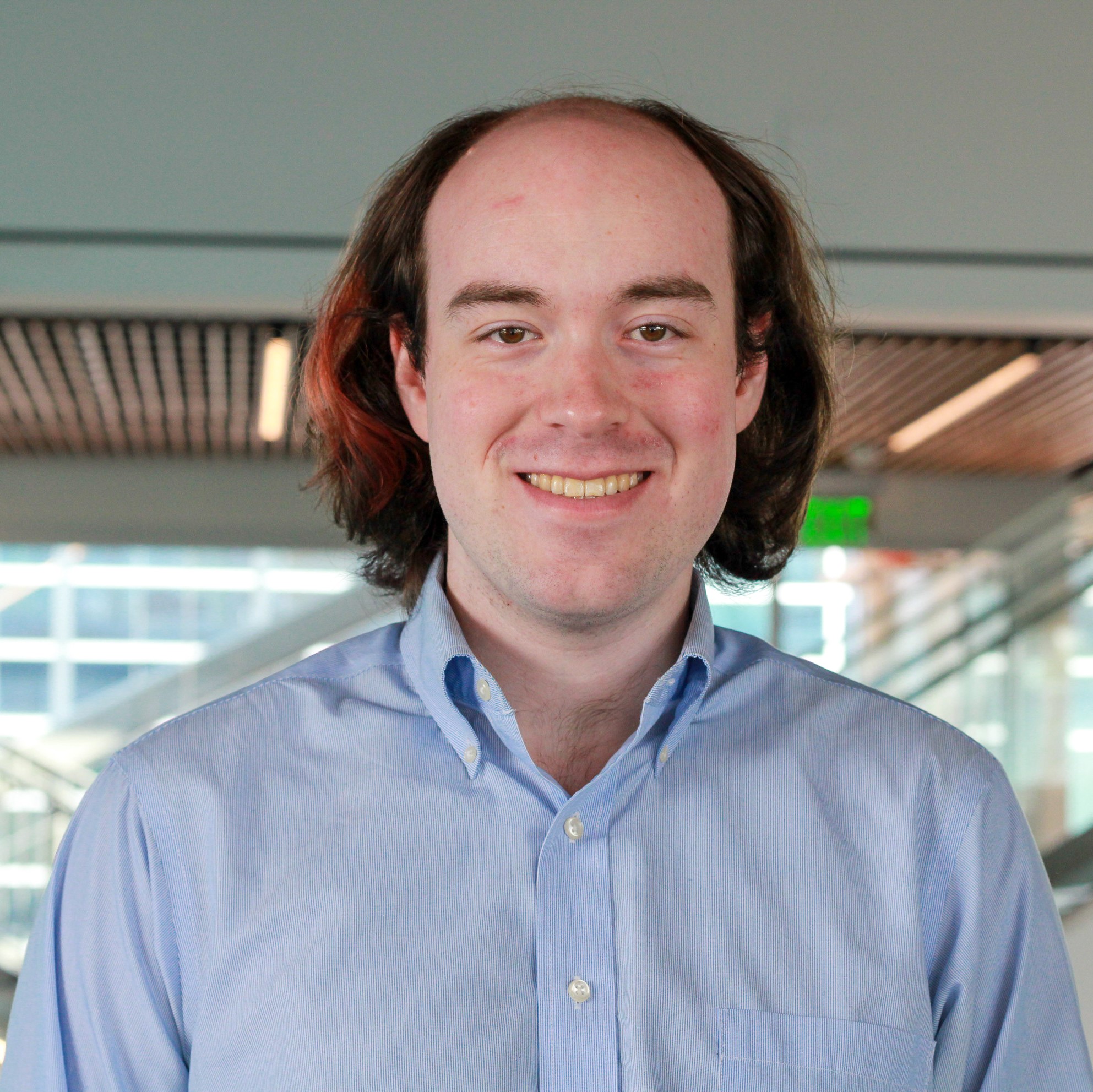 Matthew Cox (
Matthew Cox ( Lejla Skelic (
Lejla Skelic ( Yan Xu (
Yan Xu ( Jaehong Jung (
Jaehong Jung ( Cole Brabec (
Cole Brabec ( Nikita Romanov (
Nikita Romanov ( Mingran Jia (
Mingran Jia ( Daniel Sheen (
Daniel Sheen (
 Alec Yen (alecyen@mit.edu) is from Tullahoma, TN. He received the B.S. degree (summa cum laude) in Electrical Engineering from the University of Tennessee, Knoxville in 2020. His undergraduate research focused on analog integrated circuits, with past research in neuromorphic hardware, facial recognition, and power systems. He is currently a Ph.D. student in the EECS department at MIT, with a focus in terahertz integrated systems.
Alec Yen (alecyen@mit.edu) is from Tullahoma, TN. He received the B.S. degree (summa cum laude) in Electrical Engineering from the University of Tennessee, Knoxville in 2020. His undergraduate research focused on analog integrated circuits, with past research in neuromorphic hardware, facial recognition, and power systems. He is currently a Ph.D. student in the EECS department at MIT, with a focus in terahertz integrated systems. Yukimi Morimoto (
Yukimi Morimoto ( Xingyu Zou (
Xingyu Zou ( Xibi Chen (
Xibi Chen (
 Lingshan Kong received the B.Eng. degree in electrical and electronic engineering from Nanyang Technological University (NTU), Singapore, in 2014, where she is currently working toward the Ph.D. degree.
Lingshan Kong received the B.Eng. degree in electrical and electronic engineering from Nanyang Technological University (NTU), Singapore, in 2014, where she is currently working toward the Ph.D. degree. Weerachai (Junior) Neeranartvong (
Weerachai (Junior) Neeranartvong ( Nestor Franco (
Nestor Franco (
 Ibrahim (
Ibrahim (
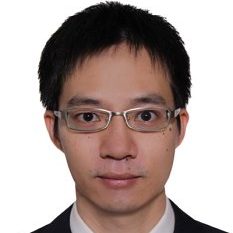
 Email: kbrody@mit.edu
Email: kbrody@mit.edu